Just Started Cycling?
 Hello and welcome back to the ThreeSpires Physiotherapy blog where we take a look at all things physiotherapy and health related. This is part of our new series of articles that we are trying to release regularly to give people ideas on how to stay, fit, healthy and exercise safely during the Corona Virus outbreak and especially during the lockdown period that we are currently in. On my daily walks it is pretty obvious that there are a huge number of people out cycling (and it looks to my eye as if many of them have only recently started) and as such I thought it might be helpful to have a look at some ideas about how to start cycling, how to start safely and how to avoid injury. There are a whole load of cycling programmes out there aimed at giving you specifics of how much mileage to do, what kind of bikes and equipment to invest in and I think they will do a much better job of that than me. This article will look in general terms at some principles of training and how much cycling would be wise and how to avoid picking up an injury by giving you a list of my top ten tips when starting cycling. This article complements our recent article about starting running which can be found here.
Hello and welcome back to the ThreeSpires Physiotherapy blog where we take a look at all things physiotherapy and health related. This is part of our new series of articles that we are trying to release regularly to give people ideas on how to stay, fit, healthy and exercise safely during the Corona Virus outbreak and especially during the lockdown period that we are currently in. On my daily walks it is pretty obvious that there are a huge number of people out cycling (and it looks to my eye as if many of them have only recently started) and as such I thought it might be helpful to have a look at some ideas about how to start cycling, how to start safely and how to avoid injury. There are a whole load of cycling programmes out there aimed at giving you specifics of how much mileage to do, what kind of bikes and equipment to invest in and I think they will do a much better job of that than me. This article will look in general terms at some principles of training and how much cycling would be wise and how to avoid picking up an injury by giving you a list of my top ten tips when starting cycling. This article complements our recent article about starting running which can be found here.
The Benefits of Cycling
I have written extensively throughout these blogs about the benefits of exercise and in particular cardiovascular exercise. Cycling is basically a great and fun low impact way of getting some exercise, raising your heart rate and generally getting fitter. The recommendations for the amount of general exercise each week are 2.5 hrs of moderate intensity exercise and cycling can form part of that exercise. As well as general cardiovascular benefits there are some specific benefits to cycling that are worth considering:
 Being Outdoors: Personally, I really enjoy cycling and one of the main benefits I find is being outside and experiencing the outdoors. Clearly, you can get a set of rollers or purchase a static bike and potentially if you are not very confident with cycling or you are wondering how to continue when the nights start to close in then this is something to consider. However, one of the main benefits of cycling and especially now during the lockdown period of the Corona Virus this is a huge benefit both in terms of getting some cardiovascular exercise and also in terms of mental health and stress relief. Being able to get into the fresh air and move through your surroundings and see new areas in a different way comes with the benefits of elevating your mood due to the release of endorphins.
Being Outdoors: Personally, I really enjoy cycling and one of the main benefits I find is being outside and experiencing the outdoors. Clearly, you can get a set of rollers or purchase a static bike and potentially if you are not very confident with cycling or you are wondering how to continue when the nights start to close in then this is something to consider. However, one of the main benefits of cycling and especially now during the lockdown period of the Corona Virus this is a huge benefit both in terms of getting some cardiovascular exercise and also in terms of mental health and stress relief. Being able to get into the fresh air and move through your surroundings and see new areas in a different way comes with the benefits of elevating your mood due to the release of endorphins.
- You Can Do it Anywhere: you don’t need to drive anywhere (although with modern bike racks it is easy to transport bikes), you don’t need to plan to be near where you do your exercise. With cycling it is as simple as grabbing your bike and stepping out of the front door and starting . For anyone time limited this is an enormous benefit and stops you looking for that long list of excuses to avoid exercise such as: “I haven’t got time to get to the gym”
- Minimal Equipment: Yes, I know you do need a bike and that it is possible to spend an enormous amount of money on cycling equipment but truthfully the vast majority of people could be happy cycling with a simple cheap (ish) bike and without much in the way of expensive gear.
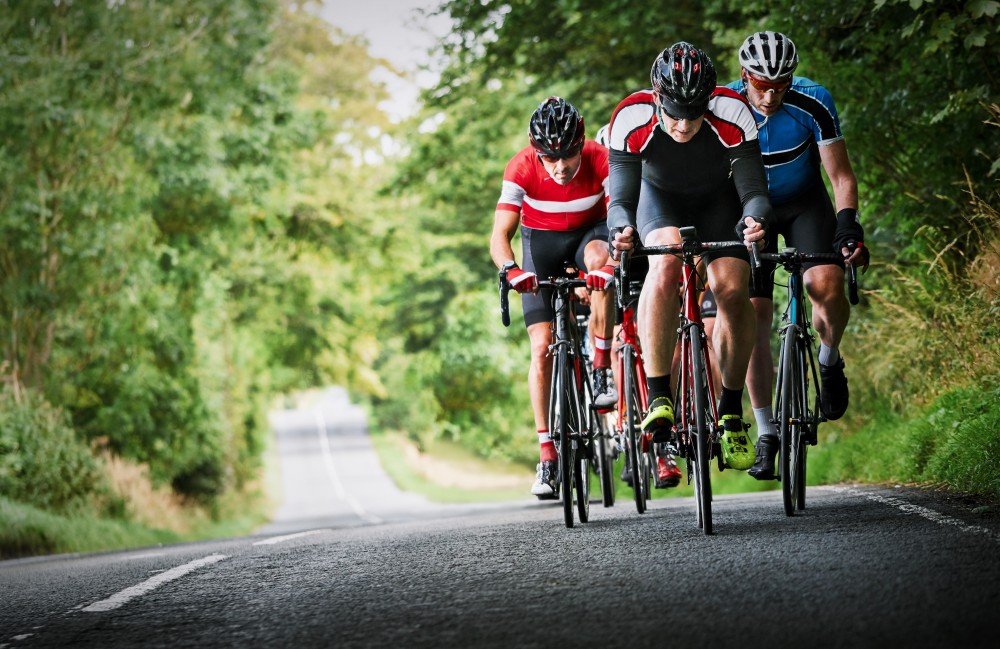 Can be done on your own or in a group: Obviously currently we need to exercise on our own or just with members of our family in order to observe lockdown rules. However if we are also thinking about the future and keeping cycling after starting then it is worth considering that cycling is great for socialisation and making friends either as part of a cycling club or just going out with some friends. For others who may prefer solitude when exercising and enjoy the time alone to think, cycling is a great activity that allows you to get out on your own and be alone in your own thoughts.
Can be done on your own or in a group: Obviously currently we need to exercise on our own or just with members of our family in order to observe lockdown rules. However if we are also thinking about the future and keeping cycling after starting then it is worth considering that cycling is great for socialisation and making friends either as part of a cycling club or just going out with some friends. For others who may prefer solitude when exercising and enjoy the time alone to think, cycling is a great activity that allows you to get out on your own and be alone in your own thoughts.
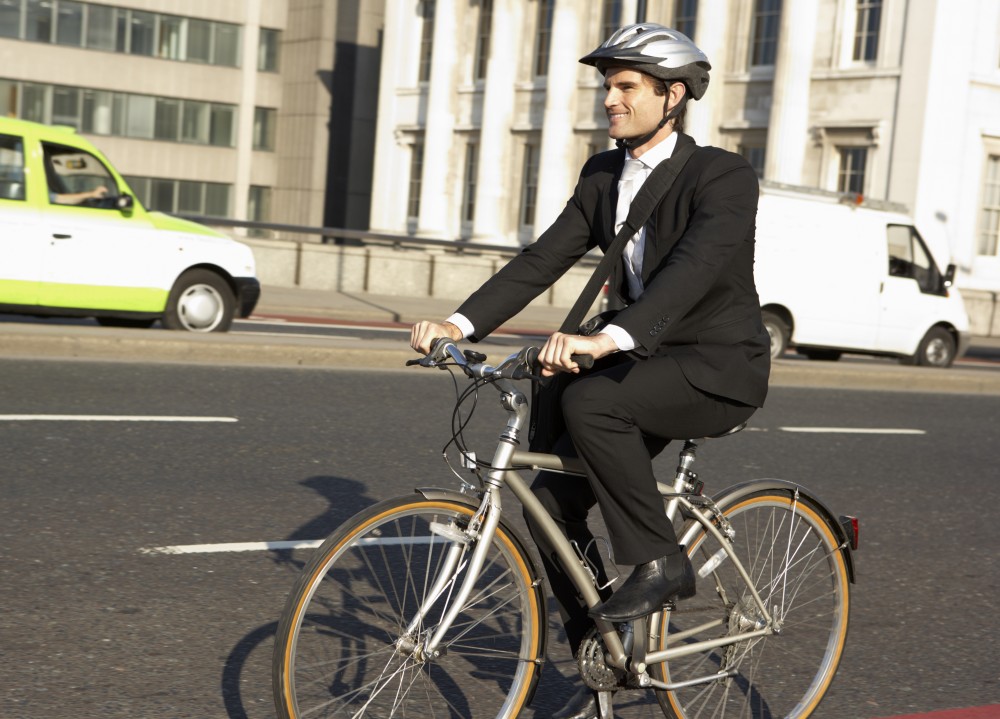 Mode of Transport: if you take the time to think about the number of short journeys you make in the car you will quickly see that cycling could replace a large number of these and act as an alternative means of transport which is good for your health, the environment and also saves you petrol money.
Mode of Transport: if you take the time to think about the number of short journeys you make in the car you will quickly see that cycling could replace a large number of these and act as an alternative means of transport which is good for your health, the environment and also saves you petrol money.
- Cover a lot of Distance: in contrast to running where most people are going to struggle to do more than 8-10km in an hour with cycling it is perfectly possible to cover 20 – 25km fairly easily in the same time. This means that you can cover a lot more of the local area and see a lot more sights via cycling.
- Low Impact: for those of us with dodgy knees or who are a bit older not having the constant impact of either running or walking on the joints can be very helpful and cycling can be a way of getting some cardiovascular activity without feeling that you are going to be very sore the next day.
Medical Clearance
Okay, I think before continuing that it is important to be aware that none of the advice or recommendations in this article replaces the need to discuss taking any new form of exercise up with your doctor. Although cycling and cardiovascular exercise is good for your health especially in terms of blood pressure and weight loss it is important to have a chat with your doctor especially if you have not done any exercise for a long period.
Top 10 Tips for Starting Cycling
Okay, hopefully we have covered why cycling is good, I think we should now look at my top 10 tips for starting cycling. Remember these are not a programme to get you to a certain standard or to do a particular challenge rather they are some general principles and tips from a physiotherapist aimed at getting you cycling safely and reducing your risk of injury.
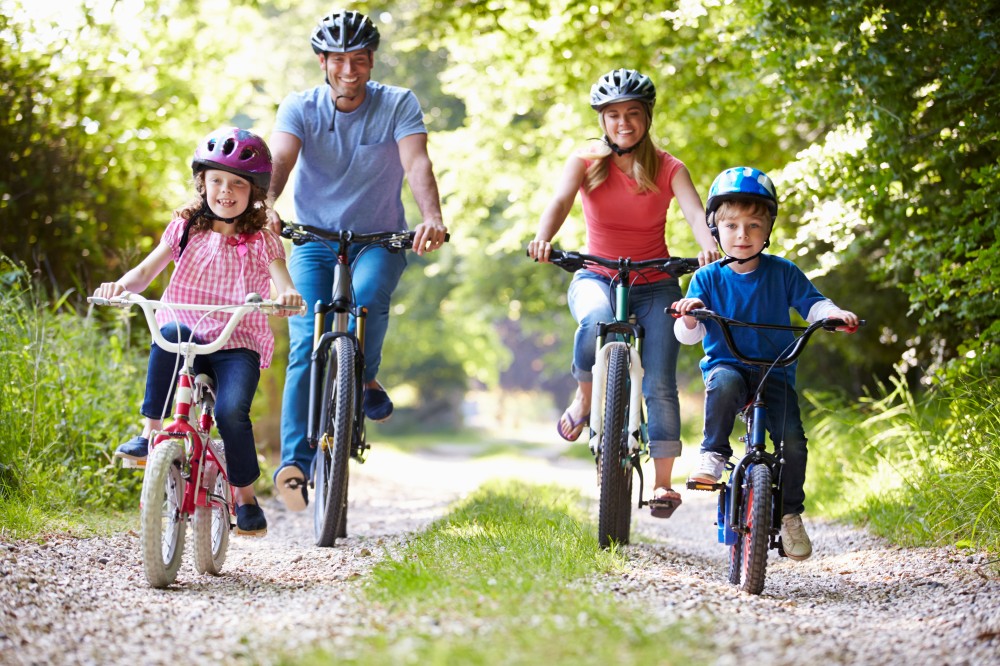 Start Slowly! If you take nothing else away from this article about starting cycling apart from this, then that would be a success. Taking things easy at the start and not trying to go from hero to zero is by far the most important piece of advice I can give you! Start Slowly covers both speed and distance and is something I try to emphasise to all of my cyclist patients. The main problem here is that having made a decision to take up cycling and try to get fit human nature is such that many people will want to go all in and start doing too much. This approach needs avoiding at all costs as it pretty much always leads to injuries and lengthy periods off cycling. As a general rule when you first begin cycling it is best to do much less initially and go much slower initially (certainly for at least the first month) than you think you can. So, if you think that you could cycle for an hour already then start with a slow gentle cycle for 30 minutes at maximum. I understand that many people will be enormously frustrated by this approach but if you want to avoid injury then you need to give your body a chance to adapt and this takes time.
Start Slowly! If you take nothing else away from this article about starting cycling apart from this, then that would be a success. Taking things easy at the start and not trying to go from hero to zero is by far the most important piece of advice I can give you! Start Slowly covers both speed and distance and is something I try to emphasise to all of my cyclist patients. The main problem here is that having made a decision to take up cycling and try to get fit human nature is such that many people will want to go all in and start doing too much. This approach needs avoiding at all costs as it pretty much always leads to injuries and lengthy periods off cycling. As a general rule when you first begin cycling it is best to do much less initially and go much slower initially (certainly for at least the first month) than you think you can. So, if you think that you could cycle for an hour already then start with a slow gentle cycle for 30 minutes at maximum. I understand that many people will be enormously frustrated by this approach but if you want to avoid injury then you need to give your body a chance to adapt and this takes time.
- Be Realistic: Often, with anyone taking up a new activity such as cycling there is a general tendency to overestimate what is realistic or to think that what was easy 20 years ago will still be so! Especially at present with people having more time on their hands due to the lockdown and wishing to get out and about on their bikes. I try to emphasise to all of my patients who are starting a new activity that being realistic about what you can actually do is important and will allow you to lay the foundations. It is much better to accept that you are not what you were 25 years ago and that in order to get cycling regularly you need to start slowly and do less than you remember being able to do.
 Don’t Cycle Everyday: This one should be obvious but in fact is probably one of the most common mistakes when taking up cycling for the first time and is likely to be especially problematic at present due to the current lockdown enabling many people to get out every day! Commonly, anyone starting cycling is likely to be extremely motivated to get fit and get out on their bikes and will be enjoying it so much that they want to get out every day and initially things improve for them. Unfortunately, this is a recipe for overtraining and injury and needs to be avoided. When you first starting cycling you really need to give your muscles, ligaments and tendons time to adapt and recover after each ride. To do this you need to allow at least one day between each run as a bare minimum. I would suggest that certainly for the first month you should not cycle more than 3 times per week and should have at least one day between each ride. Yes, I know during this lockdown period and especially if the weather is good this will be very frustrating but it will enable you to keep consistently cycling each week rather than getting injured quickly. Making slower steadier improvements initially and allowing those muscles, joints, tendons and ligaments time to adapt and strengthen will form a base that you can then add more training load to.
Don’t Cycle Everyday: This one should be obvious but in fact is probably one of the most common mistakes when taking up cycling for the first time and is likely to be especially problematic at present due to the current lockdown enabling many people to get out every day! Commonly, anyone starting cycling is likely to be extremely motivated to get fit and get out on their bikes and will be enjoying it so much that they want to get out every day and initially things improve for them. Unfortunately, this is a recipe for overtraining and injury and needs to be avoided. When you first starting cycling you really need to give your muscles, ligaments and tendons time to adapt and recover after each ride. To do this you need to allow at least one day between each run as a bare minimum. I would suggest that certainly for the first month you should not cycle more than 3 times per week and should have at least one day between each ride. Yes, I know during this lockdown period and especially if the weather is good this will be very frustrating but it will enable you to keep consistently cycling each week rather than getting injured quickly. Making slower steadier improvements initially and allowing those muscles, joints, tendons and ligaments time to adapt and strengthen will form a base that you can then add more training load to.
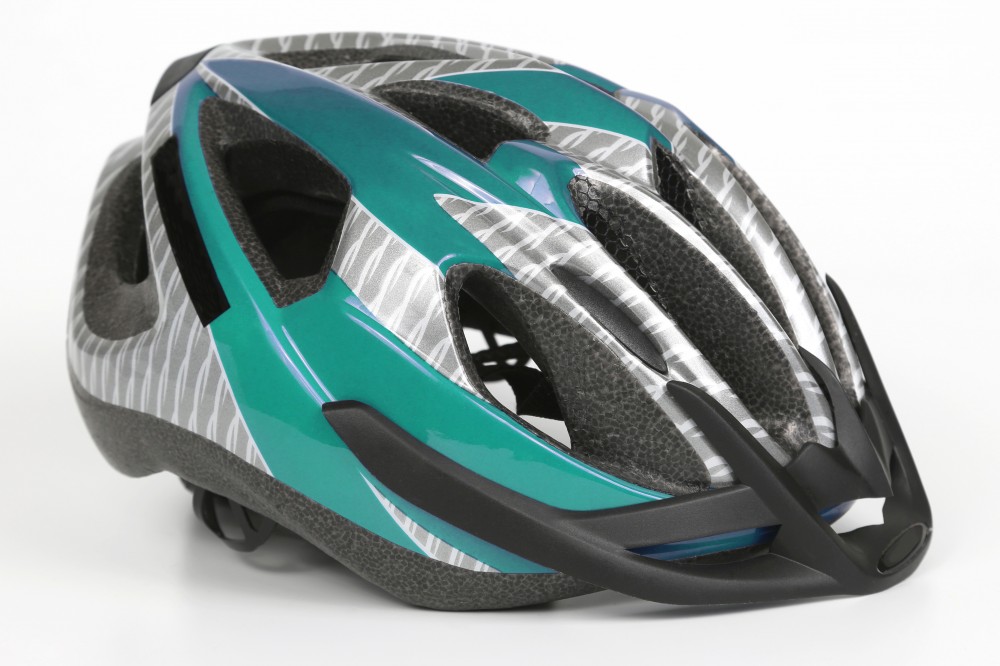 Wear a Helmet:This really is essential and these days should be something that all cyclists do. Yes, I can understand the feelings of some cyclists that they don’t like wearing a helmet and especially (if like me) if you come from an era when wearing a helmet was not the norm you may find it a bit strange. However, these days there is a such a large body of evidence that helmets save lives and help prevent significant brain injuries I really think that there is no excuse for not wearing one.
Wear a Helmet:This really is essential and these days should be something that all cyclists do. Yes, I can understand the feelings of some cyclists that they don’t like wearing a helmet and especially (if like me) if you come from an era when wearing a helmet was not the norm you may find it a bit strange. However, these days there is a such a large body of evidence that helmets save lives and help prevent significant brain injuries I really think that there is no excuse for not wearing one.
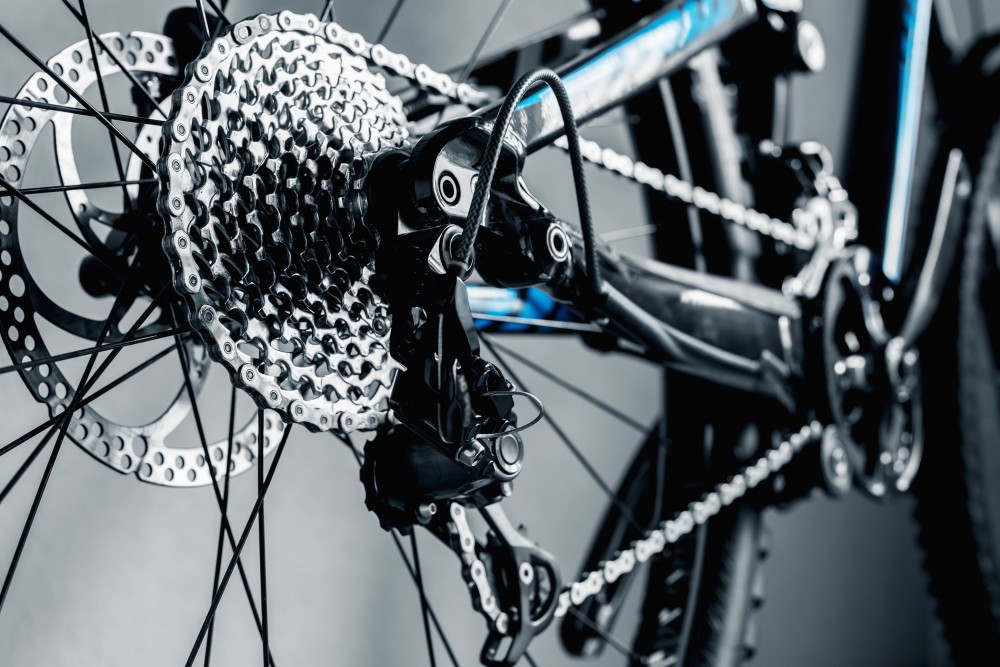 Change Gears: now this may seem like common sense to some but a lot of people that I see cycling are clearly in a very large gear with a low cadence (rate of spin of their legs). Now there is a lot of debate about the ideal cadence and how important this is and rather than get too technical I think it is best just to remember that you should choose an appropriate gear to avoid putting too much strain through your knees. This means that as you uphill you should change your gear to keep your legs moving at roughly the same rate as they were on the flat. I think a reasonable way of thinking about it is that your legs should be spinning at least one every second (60 rpm) and that this should avoid overloading your knees especially.
Change Gears: now this may seem like common sense to some but a lot of people that I see cycling are clearly in a very large gear with a low cadence (rate of spin of their legs). Now there is a lot of debate about the ideal cadence and how important this is and rather than get too technical I think it is best just to remember that you should choose an appropriate gear to avoid putting too much strain through your knees. This means that as you uphill you should change your gear to keep your legs moving at roughly the same rate as they were on the flat. I think a reasonable way of thinking about it is that your legs should be spinning at least one every second (60 rpm) and that this should avoid overloading your knees especially.
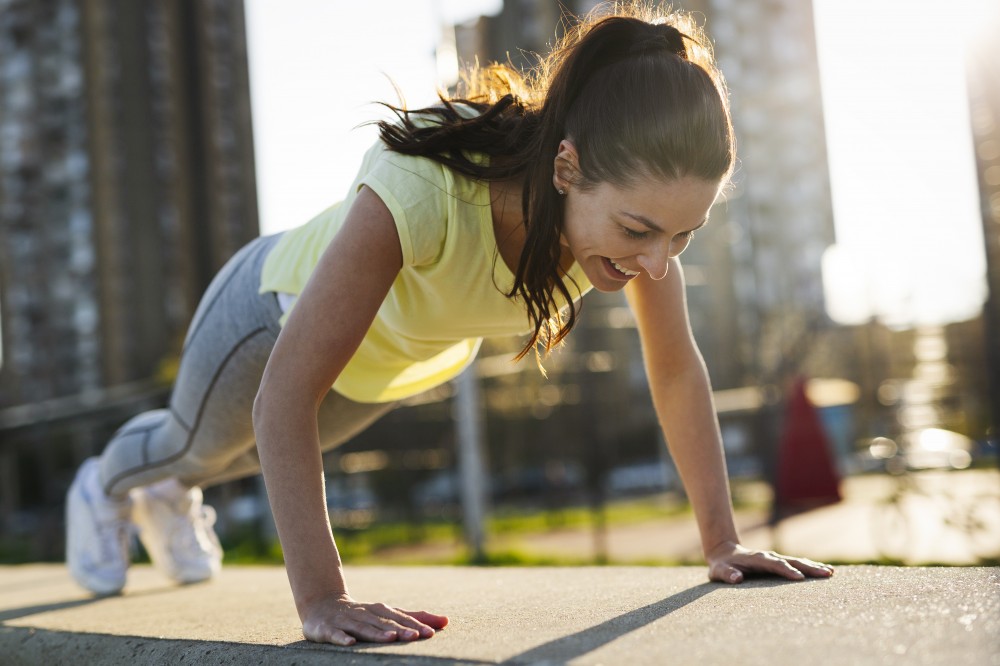 Do Some Strength Training: yes, cyclists need to be strong and they need to lift some weights and build up their general strength in their upper body as well as lower body. No, as a cyclist you do not just need a strong set of legs. Cyclists need a strong whole body that is stable during riding a bike and able to tolerate the twisting forces involved in cycling. If you are thinking about starting cycling there is a good chance that you are wanting to do this because you do not like the gym and lifting weights (this is fair enough) and as such you will generally, in terms of training, want to avoid anything that is not actually getting on your bike. As a physiotherapist I can tell you that this is a mistake, as well as cycling you should do some general strength training in order to get a generally strong body and core that will help with your ability to tolerate training and give you a stable pelvis and core. The period of first starting cycling will be the ideal time to get a general strength and core training routine, as if you are following my advice you will only be cycling 2 – 3 times per week anyway. This routine does not need to be complicated or involve going to a gym: it can be done at home fairly easily and should not take long. I would suggest a 30 minute routine would be sufficient for most. Getting this aspect right early on and making it a part of your training will pay dividends later on in your cycling career and will almost certainly reduce the likelihood of injury. To get a good routine that will address any weaknesses I would suggest that it is beneficial to see a physio and have a full assessment. If, as at present (due to the Corona Virus lockdown we are experiencing at the time of writing this article) you can’t get to see a physio but want to have a routine to help with your cycling I would suggest that you try one of our online video physiotherapy assessment sessions.
Do Some Strength Training: yes, cyclists need to be strong and they need to lift some weights and build up their general strength in their upper body as well as lower body. No, as a cyclist you do not just need a strong set of legs. Cyclists need a strong whole body that is stable during riding a bike and able to tolerate the twisting forces involved in cycling. If you are thinking about starting cycling there is a good chance that you are wanting to do this because you do not like the gym and lifting weights (this is fair enough) and as such you will generally, in terms of training, want to avoid anything that is not actually getting on your bike. As a physiotherapist I can tell you that this is a mistake, as well as cycling you should do some general strength training in order to get a generally strong body and core that will help with your ability to tolerate training and give you a stable pelvis and core. The period of first starting cycling will be the ideal time to get a general strength and core training routine, as if you are following my advice you will only be cycling 2 – 3 times per week anyway. This routine does not need to be complicated or involve going to a gym: it can be done at home fairly easily and should not take long. I would suggest a 30 minute routine would be sufficient for most. Getting this aspect right early on and making it a part of your training will pay dividends later on in your cycling career and will almost certainly reduce the likelihood of injury. To get a good routine that will address any weaknesses I would suggest that it is beneficial to see a physio and have a full assessment. If, as at present (due to the Corona Virus lockdown we are experiencing at the time of writing this article) you can’t get to see a physio but want to have a routine to help with your cycling I would suggest that you try one of our online video physiotherapy assessment sessions.
 Tendons & Ligaments Take Time: If starting cycling for the first time it is important to be aware that some areas of your body will strengthen much faster than others and some will strengthen and adapt much more slowly. It is these parts that adapt and strengthen slowly that are at most danger of injury especially in the early days of starting cycling. Tendons and ligaments are in general very low blood flow structures and as such take a very long time to adapt to new training stimuli such as cycling and as such you need to consider that these areas are the bits most likely to get injured. Muscles are in general high blood flow environments and will adapt and strengthen to taking up cycling much faster and are (in general) less likely to get injured. The problems arise (these are especially common in people who are relatively fit and athletic) when you start cycling and initially you can feel that your legs are getting stronger and your heart and lungs are feeling better. At this point there is a large temptation to up the volume and speed of cycling – this is usually a mistake as although these structures have got stronger, your ligaments and tendons are still adapting to the new loads being put through them and are very likely to get injured.
Tendons & Ligaments Take Time: If starting cycling for the first time it is important to be aware that some areas of your body will strengthen much faster than others and some will strengthen and adapt much more slowly. It is these parts that adapt and strengthen slowly that are at most danger of injury especially in the early days of starting cycling. Tendons and ligaments are in general very low blood flow structures and as such take a very long time to adapt to new training stimuli such as cycling and as such you need to consider that these areas are the bits most likely to get injured. Muscles are in general high blood flow environments and will adapt and strengthen to taking up cycling much faster and are (in general) less likely to get injured. The problems arise (these are especially common in people who are relatively fit and athletic) when you start cycling and initially you can feel that your legs are getting stronger and your heart and lungs are feeling better. At this point there is a large temptation to up the volume and speed of cycling – this is usually a mistake as although these structures have got stronger, your ligaments and tendons are still adapting to the new loads being put through them and are very likely to get injured.
- Don’t Go Too Fast or Far: Trying to go too far or fast is one of the commonest mistakes I see as a physiotherapist and is especially common amongst people who are relatively fit and young when they take up a new activity such as cycling. If you are generally an active person and have just decided to take up cycling you will commonly find that you make really big improvements in terms of how fast and far you can go and how good you feel when cycling more quickly. The problem here is that you need to give your body time to adapt to both increases in speed and increases in distance and increasing both at the same time or one by too much is a recipe for injury. As a physiotherapist I generally advise patients who are new to cycling not to increase both their speed or distance at the same time and also if you do say cycle faster one time then you need to think about having a slower ride the next time to let your body adapt to the change. Going out and each time cycling faster and going further as you get fitter is a good recipe for injury as you simply are not allowing your body to adapt to these changes.
 Don’t Do Too Many Hills: now I appreciate if you live in a very hilly area this may be difficult to achieve but still it needs considering as doing too much hilly work early on in your cycling career is likely to overload your knees. By not doing too many hills I simply mean that when first starting the majority of your riding needs to be on the relative flat in order to give your body and legs a large amount of time to adjust to the new loads going through them. Doing some hills on a ride is fine but these should (ideally be only a small part of the ride). If you do go on a hilly ride then you should try on your next ride to do a flattish ride so as to give yourself variety. I appreciate that this may be difficult for those living in mountainous areas or for those who love riding out in the countryside but it is still worth being conservative about this.
Don’t Do Too Many Hills: now I appreciate if you live in a very hilly area this may be difficult to achieve but still it needs considering as doing too much hilly work early on in your cycling career is likely to overload your knees. By not doing too many hills I simply mean that when first starting the majority of your riding needs to be on the relative flat in order to give your body and legs a large amount of time to adjust to the new loads going through them. Doing some hills on a ride is fine but these should (ideally be only a small part of the ride). If you do go on a hilly ride then you should try on your next ride to do a flattish ride so as to give yourself variety. I appreciate that this may be difficult for those living in mountainous areas or for those who love riding out in the countryside but it is still worth being conservative about this.
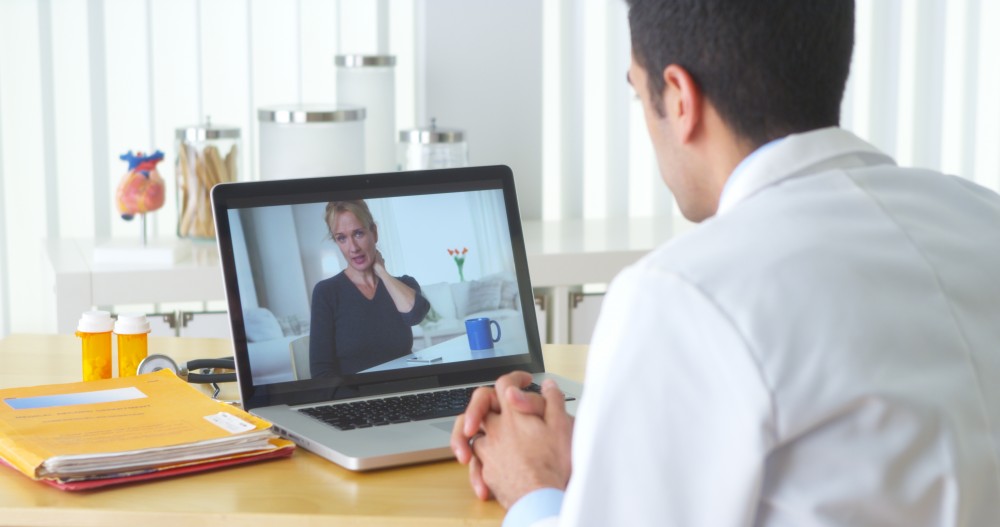 Get an Assessment: I appreciate that during the current Corona Virus outbreak this is very difficult – as at the time of writing we are currently in lockdown and unable to get out to patients. However, in general terms getting an assessment with a physiotherapist either before starting cycling or early on after beginning cycling is really helpful. They will be able to look at your strength, balance, specific areas of weakness and your cycling programme and be able to identify areas to improve and what you should concentrate on in order to avoid injury. They will be able to give you a programme of supplementary training exercises to reduce your injury risk and will be also able to look at the amount of cycling that you are doing and consider if you are doing too much or too little. At present we are offering online video physiotherapy assessments to help with exactly this issue and if you feel that you might benefit from an assessment because you have just started cycling and are worried about getting injured or have started getting some niggles then please get in touch.
Get an Assessment: I appreciate that during the current Corona Virus outbreak this is very difficult – as at the time of writing we are currently in lockdown and unable to get out to patients. However, in general terms getting an assessment with a physiotherapist either before starting cycling or early on after beginning cycling is really helpful. They will be able to look at your strength, balance, specific areas of weakness and your cycling programme and be able to identify areas to improve and what you should concentrate on in order to avoid injury. They will be able to give you a programme of supplementary training exercises to reduce your injury risk and will be also able to look at the amount of cycling that you are doing and consider if you are doing too much or too little. At present we are offering online video physiotherapy assessments to help with exactly this issue and if you feel that you might benefit from an assessment because you have just started cycling and are worried about getting injured or have started getting some niggles then please get in touch.
Okay, I hope that you have found this article about starting cycling helpful, as I have mentioned it is not designed as a cycling programme more as a series of tips and recommendations that as a physiotherapist I would advise you to be aware of if you want to stay injury free.
REQUEST A CALLBACK
Just fill in the form below and give us a quick idea of your problem/request so that we can be better prepared to help you.
